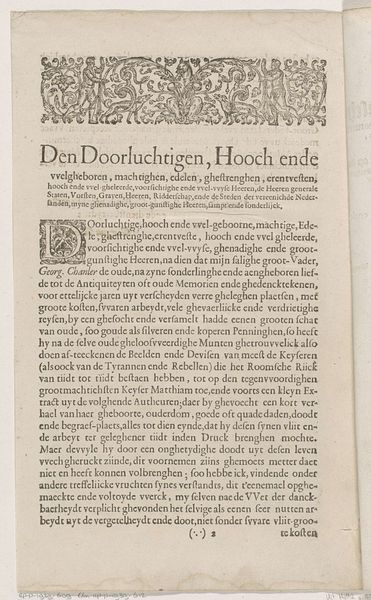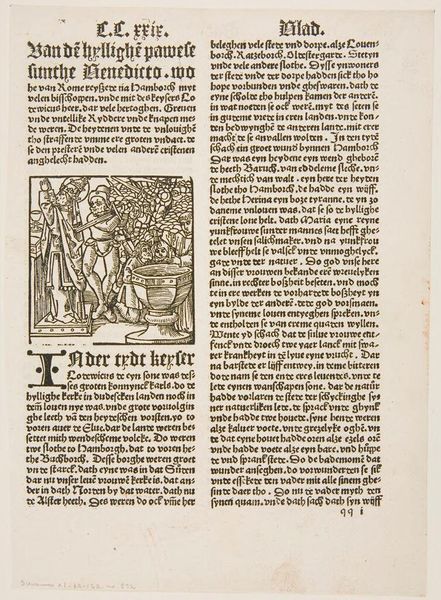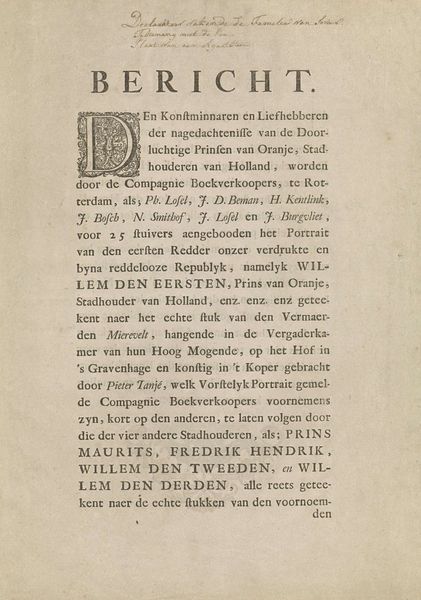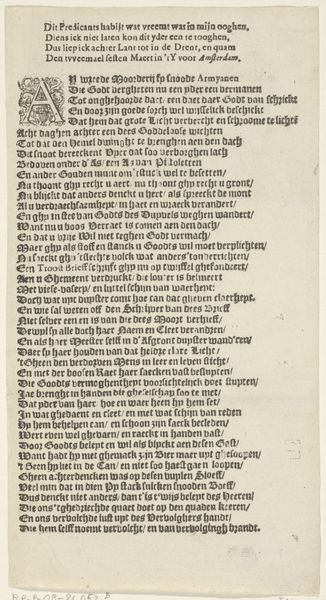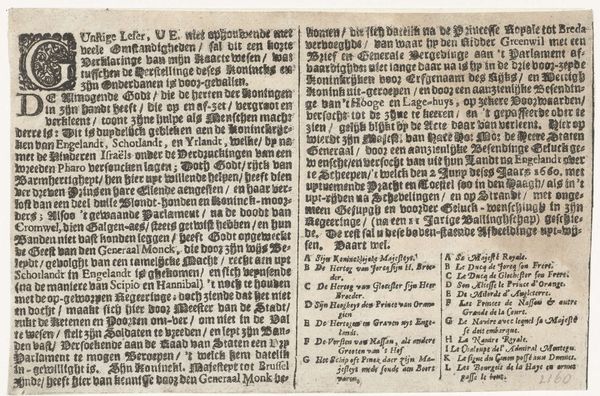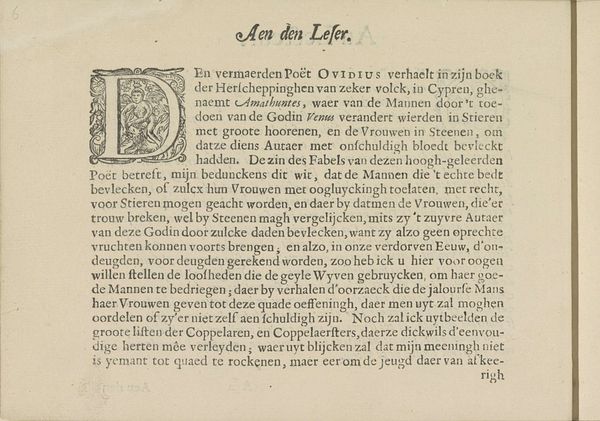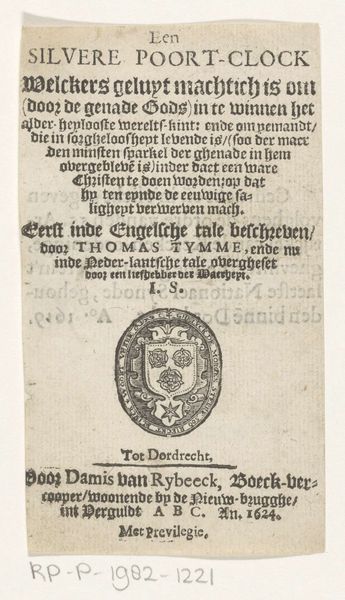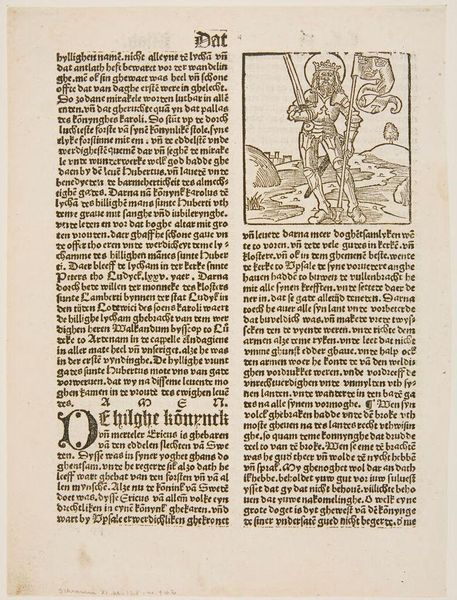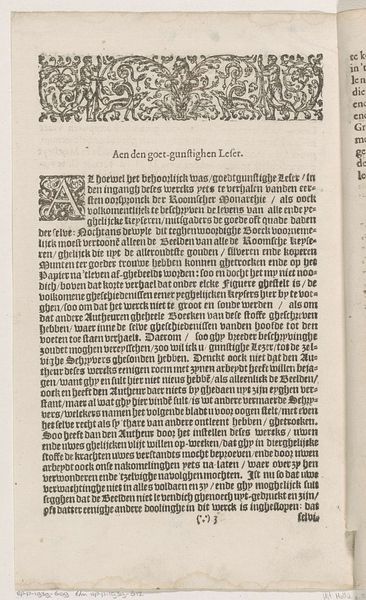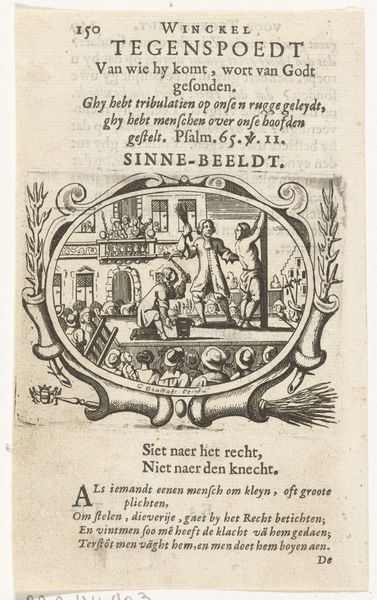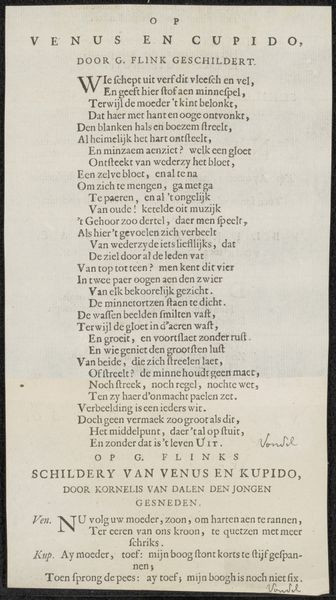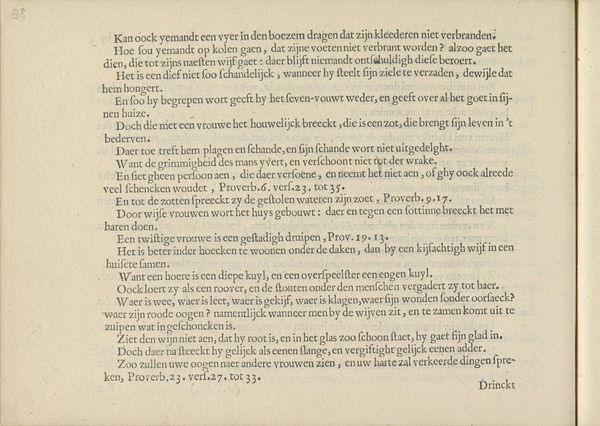
graphic-art, print, typography
#
graphic-art
#
aged paper
#
hand-lettering
#
dutch-golden-age
# print
#
old engraving style
#
hand drawn type
#
hand lettering
#
11_renaissance
#
typography
#
hand-drawn typeface
#
stylized text
#
thick font
#
handwritten font
#
historical font
Dimensions: height 120 mm, width 70 mm
Copyright: Rijks Museum: Open Domain
Curator: This is an interesting little typographic work entitled "Voorwoord," dating back to 1659. It's housed here at the Rijksmuseum. What are your first thoughts? Editor: I'm immediately struck by its textual density. The tight leading and compact letterforms create a powerful impression, a deliberate assertion of text as image and a visual argument against access for casual viewers. It suggests a society that valued literacy and saw text as exclusive knowledge. Curator: Absolutely. The graphic art employed and particularly this example of early typography demonstrates how prints played a key role in disseminating ideas. The materials used--paper, ink and the printing press, are integral to the accessibility and mass production, that's worth emphasizing. How does that inform the piece's societal meaning? Editor: I'm thinking about access, both in the 17th century and today. It reminds me that printed matter, like any medium, carries its own set of power dynamics and suggests we question the stories this print attempts to tell versus which people or political views were silenced. Also the text itself in Dutch hints toward trade networks and print markets in Europe at this time. Curator: Agreed, understanding the labor involved -- the typesetting, printing, distribution – illuminates its value as a commodity and communication tool. It's fascinating to consider who this "Voorwoord" was originally intended for and where it fits in that larger ecosystem of print production. The craft and work embedded into creating and consuming something of this sort deserves to be noticed! Editor: Exactly, situating this piece within that network and connecting it to cultural studies provides much needed nuance. Instead of focusing solely on authorial intent or artistry, you invite us to really contemplate class and power structures shaping cultural and intellectual exchange in that era. Curator: Thinking about its creation helps break down the romantic notions we often attach to the art of the Dutch Golden Age and brings out labor. Editor: Looking at it this way shows that art isn't produced in a bubble. Rather, it reflects, reinforces, or resists societal narratives about privilege and visibility, encouraging ongoing dialog on such themes.
Comments
No comments
Be the first to comment and join the conversation on the ultimate creative platform.

